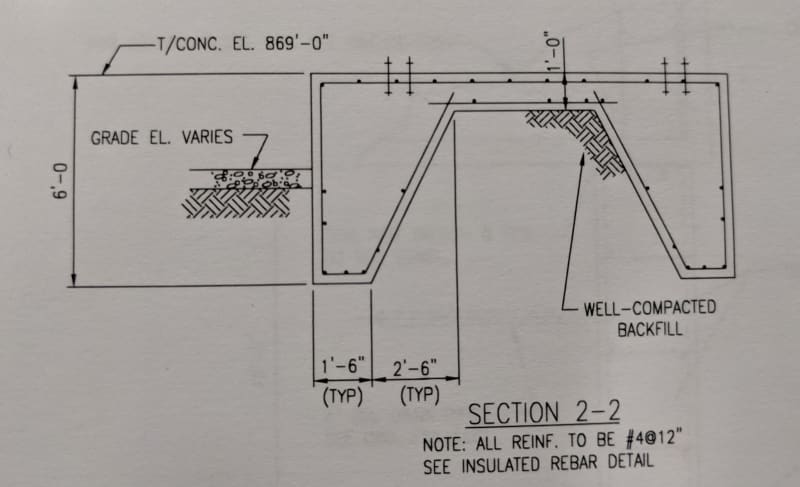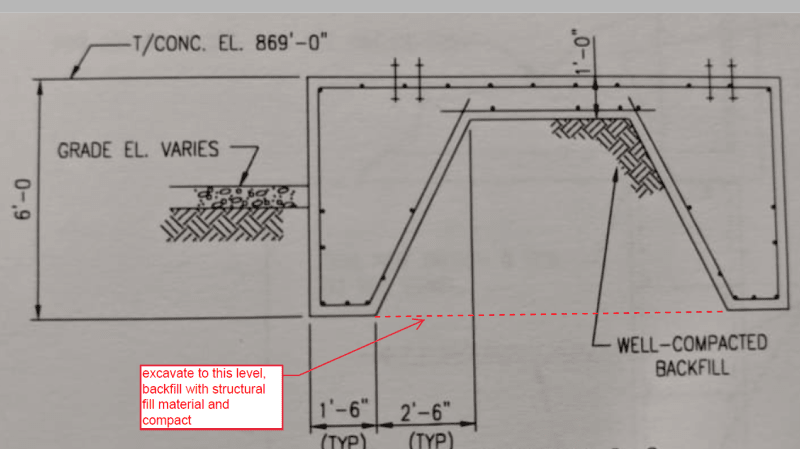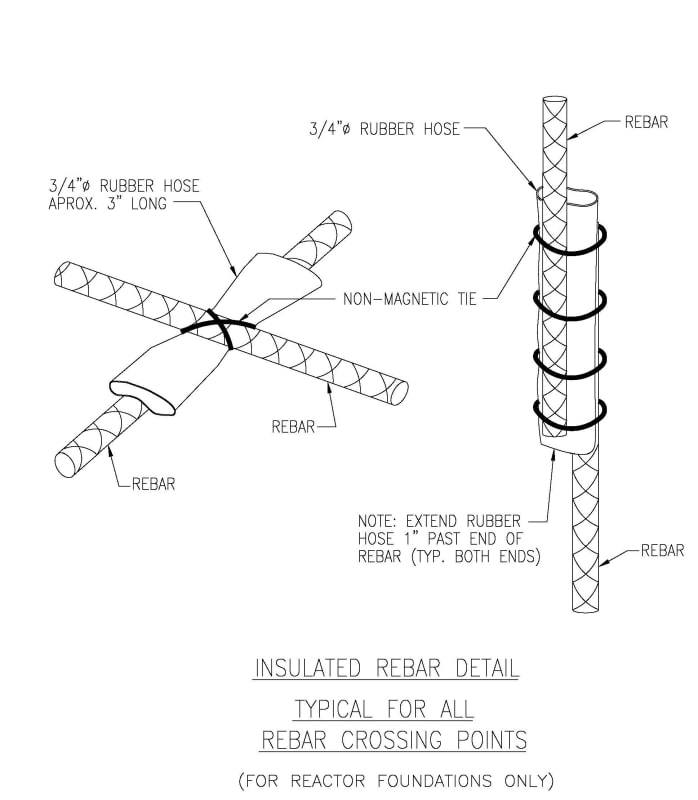We're working on putting new equipment on an existing foundation. I have attached a picture of the existing foundation.
When evaluating bearing pressure on this type of foundation, what area can you use for the bearing area? We assumed it's just the turned down area (in this case the 1'-6" length) but wasn't sure if the diagonal area (2'-6" in length) from the thickened edge to the center 12" slab could be counted as well.
Thanks for any help.

When evaluating bearing pressure on this type of foundation, what area can you use for the bearing area? We assumed it's just the turned down area (in this case the 1'-6" length) but wasn't sure if the diagonal area (2'-6" in length) from the thickened edge to the center 12" slab could be counted as well.
Thanks for any help.



